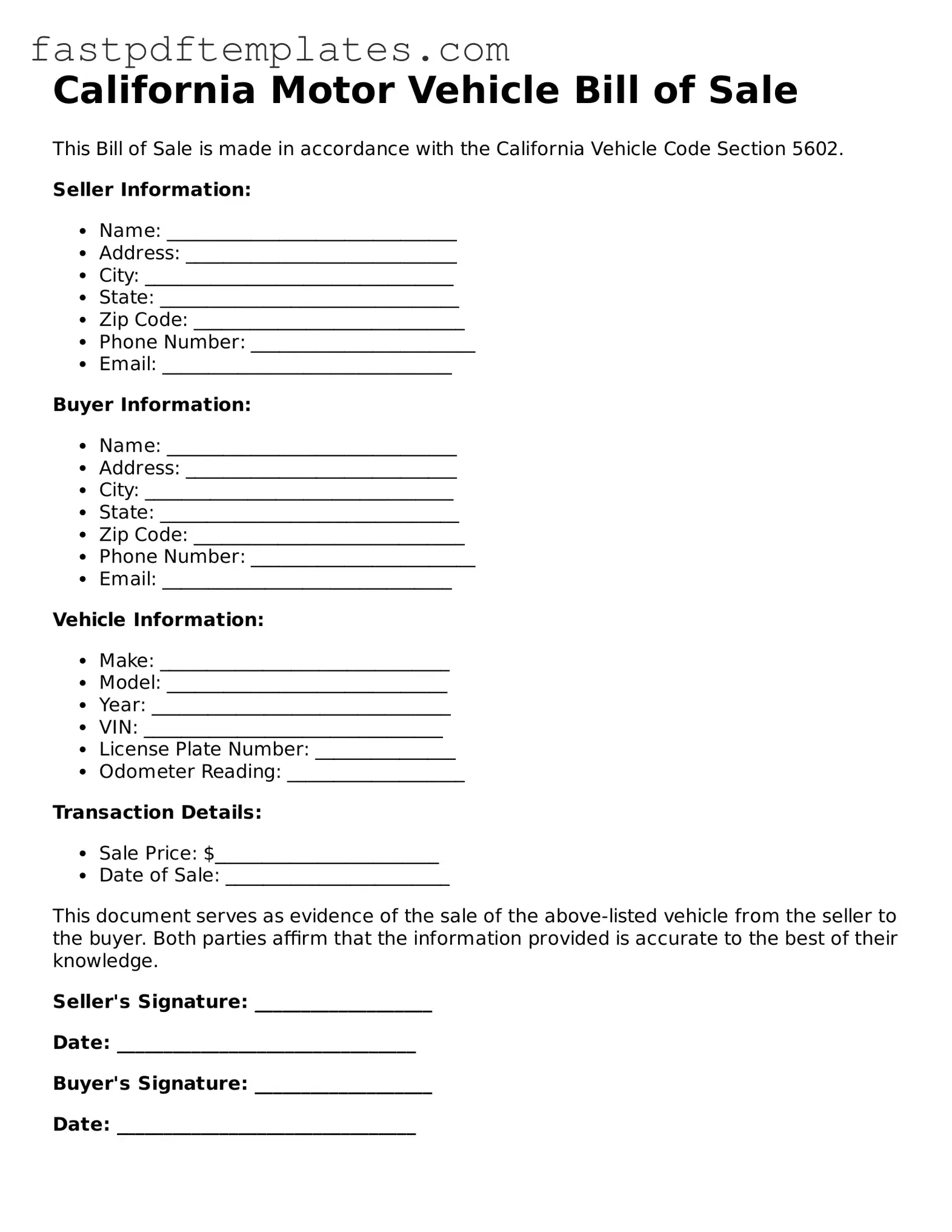The California Vehicle Transfer and Release Form serves a similar purpose to the Motor Vehicle Bill of Sale. This document is used when a vehicle is sold or transferred, allowing the seller to release any liability for the vehicle after the sale. It provides a clear record of the transaction and ensures that the new owner is registered as the vehicle's legal owner. Both forms help protect the interests of both parties involved in the sale.
The Vehicle Registration Application is another document closely related to the Bill of Sale. After a sale, the new owner must register the vehicle with the Department of Motor Vehicles (DMV). This application requires information about the vehicle and the new owner, and it often references the Bill of Sale as proof of ownership transfer. This connection ensures that the vehicle is officially recognized under the new owner's name.
The Application for Title is also similar to the Bill of Sale in that it serves to establish ownership of a vehicle. When a vehicle is purchased, the new owner must apply for a title that reflects their ownership. The Bill of Sale acts as supporting documentation for this application, providing evidence that the vehicle was legitimately sold and transferred from the previous owner.
The odometer disclosure statement is another document that often accompanies the Bill of Sale. This statement is required by federal law when a vehicle is sold and details the vehicle's mileage at the time of sale. This disclosure helps protect buyers from odometer fraud and ensures transparency in the transaction. It is typically included as part of the Bill of Sale or as an attachment.
The Smog Certification is a relevant document in California that may accompany the Bill of Sale. In many cases, a vehicle must pass a smog check before it can be sold. The seller provides this certification to the buyer, confirming that the vehicle meets state emissions standards. This document reassures the buyer about the vehicle's condition and compliance with environmental regulations.
The Release of Liability form is similar to the Bill of Sale in that it protects the seller after the vehicle has been sold. This form notifies the DMV that the seller is no longer responsible for the vehicle. By submitting this document, the seller can avoid potential liabilities that may arise after the sale, such as traffic violations or accidents involving the vehicle.
The Power of Attorney for Vehicle Transactions can also be compared to the Bill of Sale. This document allows one party to act on behalf of another in vehicle-related transactions. For instance, if the seller cannot be present during the sale, they may grant power of attorney to a trusted individual. This ensures that the transaction can proceed smoothly, with the appointed person able to complete the necessary paperwork, including the Bill of Sale.
Finally, the Vehicle History Report is a document that complements the Bill of Sale by providing potential buyers with important information about the vehicle's past. This report includes details such as previous ownership, accident history, and title status. By reviewing this report, buyers can make informed decisions, and it serves as an additional layer of transparency in the transaction process.
